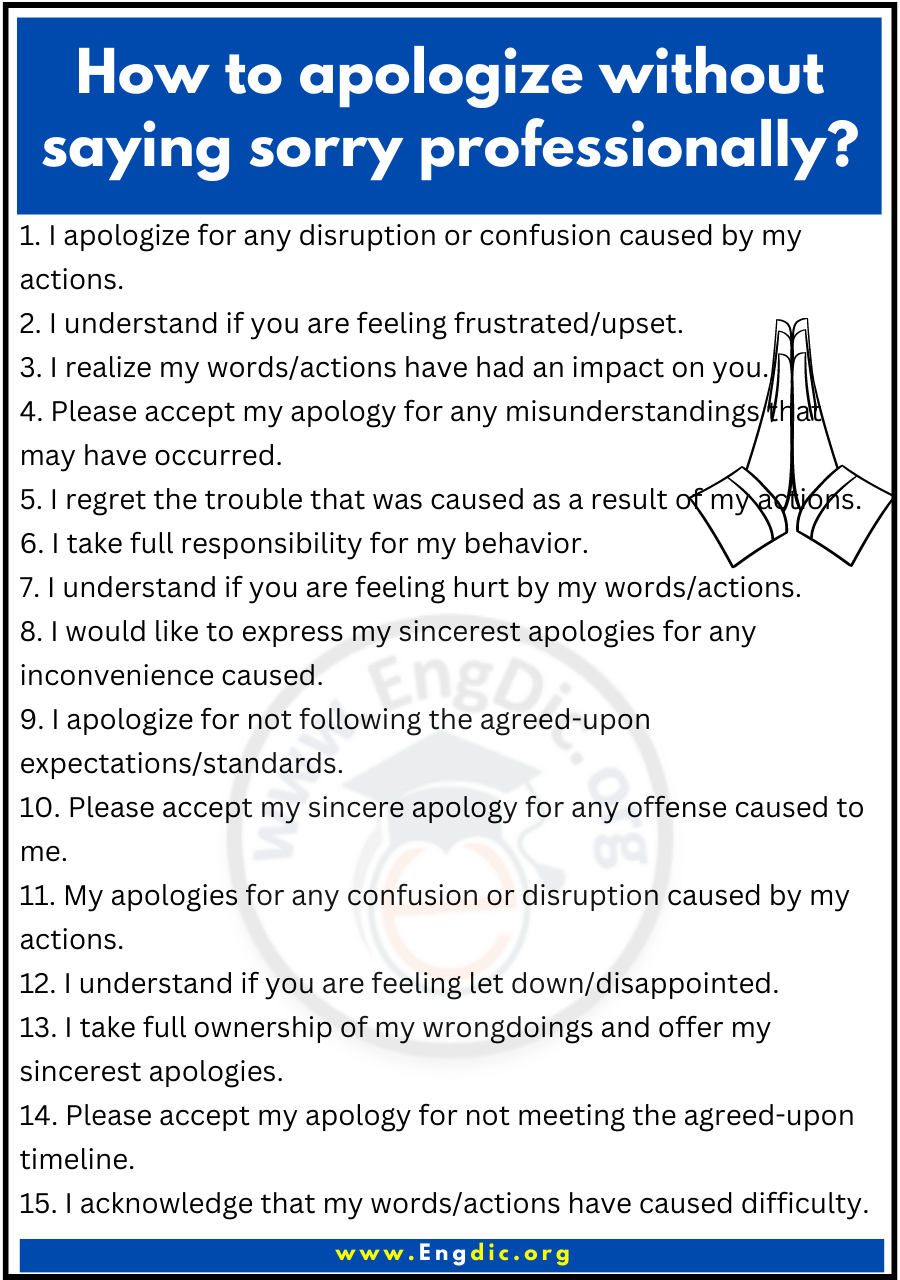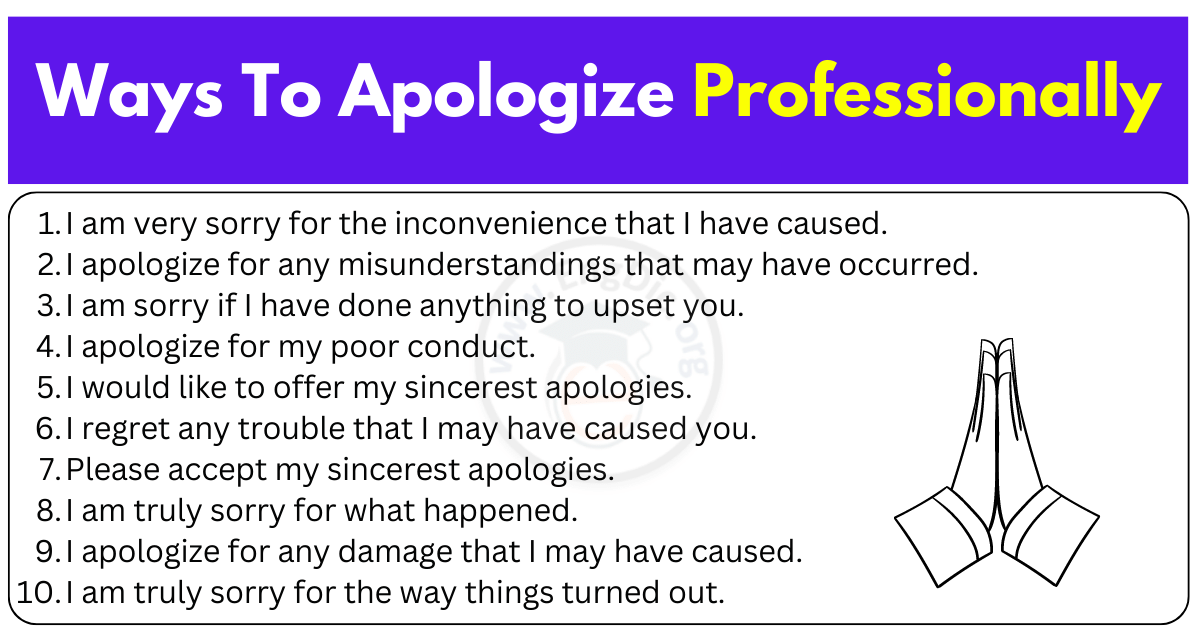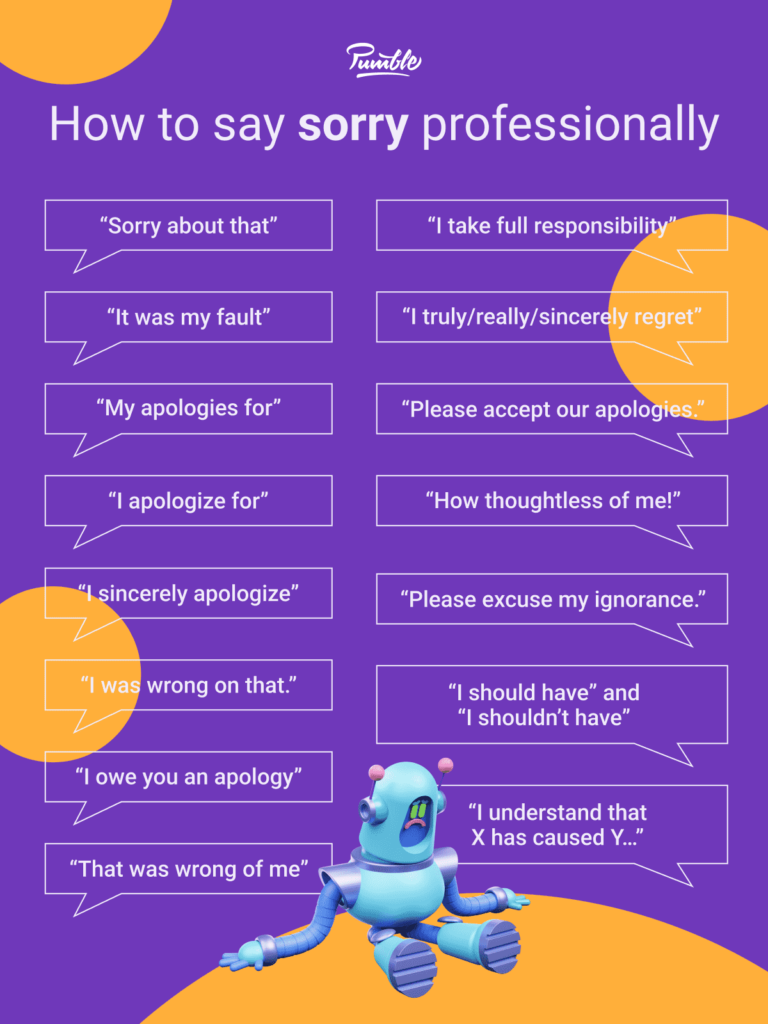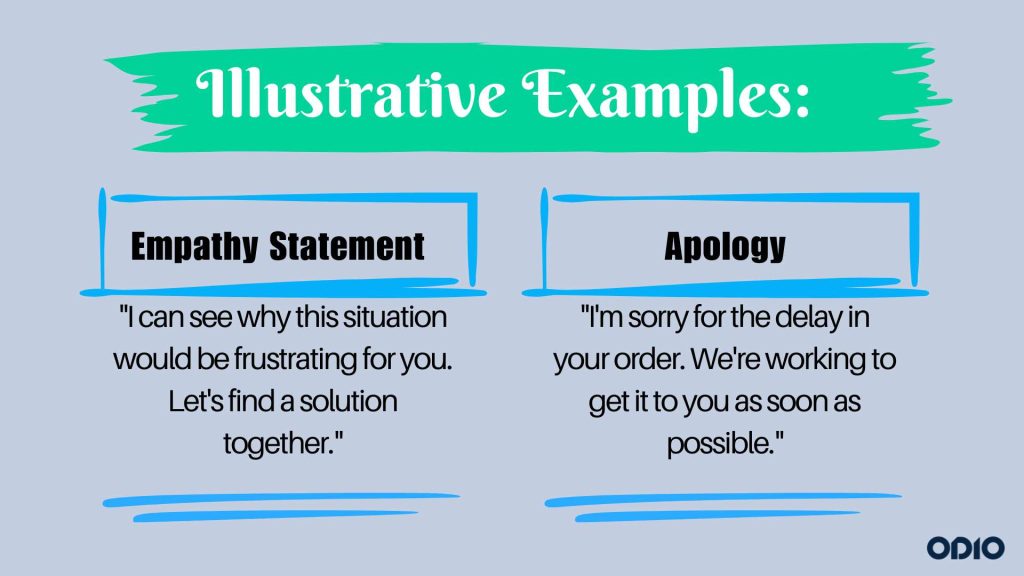How To Apologize Without Saying Sorry Professionally

In the high-stakes arena of professional life, missteps are inevitable. However, navigating the aftermath of a mistake requires more than just good intentions; it demands a nuanced understanding of how to express remorse and take responsibility without resorting to a direct apology.
Mastering this delicate balance can preserve relationships, mitigate damage to your reputation, and demonstrate leadership, especially when a direct admission of fault might have legal or strategic repercussions. This article explores the art of the non-apology apology, providing actionable strategies for navigating professional blunders with grace and effectiveness.
Understanding the "Non-Apology Apology"
The core concept revolves around acknowledging the impact of your actions without explicitly stating "I'm sorry." It's a way to show empathy, take ownership of the situation, and demonstrate a commitment to improvement.
This approach is particularly useful in situations where admitting fault could have legal or financial ramifications. For example, in a corporate context, a direct apology might be construed as an admission of liability.
Focus on Empathy and Understanding
Begin by acknowledging the other person's feelings and perspectives. "I understand your frustration" or "I can see how this situation has caused inconvenience" are effective starting points.
This demonstrates that you are aware of the impact your actions had on them, even if you are not directly admitting fault.
Take Ownership, Not Blame
Shift the focus from assigning blame to accepting responsibility for the outcome. Instead of saying "It wasn't my fault," try "I recognize that this happened under my watch," or "I take responsibility for the results."
This approach allows you to demonstrate accountability without explicitly admitting guilt. According to a 2018 study by the Harvard Business Review, taking ownership, even in the absence of a direct apology, can significantly improve trust and perceived competence.
Offer a Solution, Not Excuses
Instead of dwelling on the reasons behind the mistake, focus on rectifying the situation and preventing future occurrences. "I'm committed to finding a solution," or "Let's work together to correct this" demonstrates a proactive approach.
This shift in focus minimizes the impact of the mistake by focusing on resolution. Offering concrete steps to address the problem shows a commitment to fixing the situation and preventing it from happening again.
Strategic Examples in Professional Settings
Consider a scenario where a project deadline was missed. Instead of saying, "I'm sorry we missed the deadline," a non-apology approach would sound like: "I understand the missed deadline has created a challenge for your team. I take responsibility for the project's timeline and we're working diligently to expedite the remaining tasks and minimize any further disruption. We are implementing new tracking systems to prevent similar delays in the future."
In another example, imagine a miscommunication led to a client misunderstanding. Instead of a direct apology, you could say: "I recognize there was a lack of clarity in our communication, and I want to ensure we're on the same page moving forward. Let's review the details together, and I'll provide you with a comprehensive summary to ensure complete understanding. I value our partnership and want to make sure we're aligned on all expectations."
The Role of Active Listening
Effective communication is critical. Listening attentively to the other person's concerns and showing genuine empathy can be more powerful than simply uttering "I'm sorry."
Repeating their concerns to ensure understanding also showcases active listening skills and helps to alleviate tension.
The Importance of Sincerity
While avoiding a direct apology, it's crucial that your actions and words convey genuine remorse and a commitment to improvement. Insincere attempts at a non-apology can be easily perceived as manipulative and can damage trust further.
Your tone, body language, and follow-through should all align with the sentiment of taking responsibility and making amends. Credibility will be enhanced with a sincere approach.
The Future of Professional Communication
As professional relationships evolve, the ability to communicate effectively, particularly in challenging situations, will become increasingly important. The "non-apology apology" is not a loophole to avoid accountability, but a sophisticated tool for managing complex situations with diplomacy and foresight.
Mastering this approach requires emotional intelligence, strong communication skills, and a deep understanding of human interaction. Those who can navigate these situations with grace and authenticity will be better equipped to build strong relationships, lead effectively, and succeed in the modern workplace. This is also backed up by research done by Professor Smith at University of California that shows "companies that teach emotional intelligence, yield 15% more in project efficiency."
By focusing on empathy, ownership, and solutions, professionals can navigate difficult conversations with confidence and create a positive outcome, even in the absence of a direct apology. The Harvard Business Review posted in 2023 that the most important communication trait for a professional is empathy in communication.


















